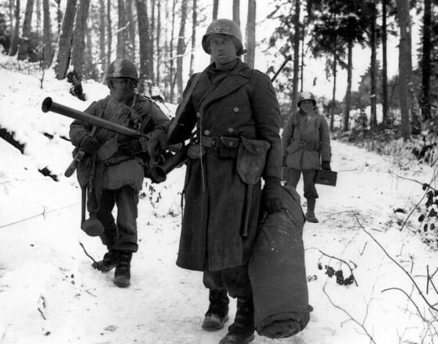As 1914 drew to a close, the Western Front had become a permanent fixture of trenches stretching 400 miles from the English Channel to Switzerland. Stalemate ensued. A year later, the situation was no better. Each side looked for a ‘Big Push’ that would break the opposing line of defence and bring about victory. Rupert Colley summarises one such push – the Battle of Verdun.
‘France will bleed to death’
At the end of 1915, the German commander-in-chief, Erich von Falkenhayn, decided that Germany’s ‘arch enemy’ was not France, but Britain. But to destroy Britain’s will, Germany had first to defeat France. In a ‘Christmas memorandum’ to the German kaiser, Wilhelm II, Falkenhayn proposed an offensive that would compel the French to ‘throw in every man they have. If they do so,’ he continued, ‘the forces of France will bleed to death’. The place to do this, Falkenhayn declared, would be Verdun.
 An ancient town, Verdun in northeastern France, was, in 1915, surrounded by a string of sixty interlocked and reinforced forts. On 21 February 1916, the Battle of Verdun began. 1,200 German guns lined over only eight miles pounded the city which, despite intelligence warning of the impending attack, remained poorly defended. Verdun, which held a symbolic tradition among the French, was deemed not so important by the upper echelon of France’s military. Joseph Joffre, the French commander, was slow to respond until the exasperated French prime minister, Aristide Briand, paid a night-time visit. Waking Joffre from his slumber, Briand insisted that he take the situation more seriously: ‘You may not think losing Verdun a defeat – but everyone else will’.
An ancient town, Verdun in northeastern France, was, in 1915, surrounded by a string of sixty interlocked and reinforced forts. On 21 February 1916, the Battle of Verdun began. 1,200 German guns lined over only eight miles pounded the city which, despite intelligence warning of the impending attack, remained poorly defended. Verdun, which held a symbolic tradition among the French, was deemed not so important by the upper echelon of France’s military. Joseph Joffre, the French commander, was slow to respond until the exasperated French prime minister, Aristide Briand, paid a night-time visit. Waking Joffre from his slumber, Briand insisted that he take the situation more seriously: ‘You may not think losing Verdun a defeat – but everyone else will’.
‘They shall not pass’ Continue reading
 The photograph sums it up: General Arthur Percival (far right), the British commander in Malaya, and his fellow officers, walking forlornly towards the Japanese commanders to sign the dismal surrender. With their baggy shorts, knee-length socks and tin helmets, one carries the Union Jack while another holds the white flag of surrender. Escorting them, a number of Japanese soldiers, or ‘little men’ as the British military elite referred to them.
The photograph sums it up: General Arthur Percival (far right), the British commander in Malaya, and his fellow officers, walking forlornly towards the Japanese commanders to sign the dismal surrender. With their baggy shorts, knee-length socks and tin helmets, one carries the Union Jack while another holds the white flag of surrender. Escorting them, a number of Japanese soldiers, or ‘little men’ as the British military elite referred to them. The Germans started their attack on Stalingrad, Operation Blue, on 28 June 1942. Led by the Sixth Army, Germany’s largest wartime army commanded by General
The Germans started their attack on Stalingrad, Operation Blue, on 28 June 1942. Led by the Sixth Army, Germany’s largest wartime army commanded by General  The Allies knew there was a build-up of German troops and equipment around the Ardennes but never believed Hitler was capable of such a bold initiative. Only the day before the attack, the British commander,
The Allies knew there was a build-up of German troops and equipment around the Ardennes but never believed Hitler was capable of such a bold initiative. Only the day before the attack, the British commander,